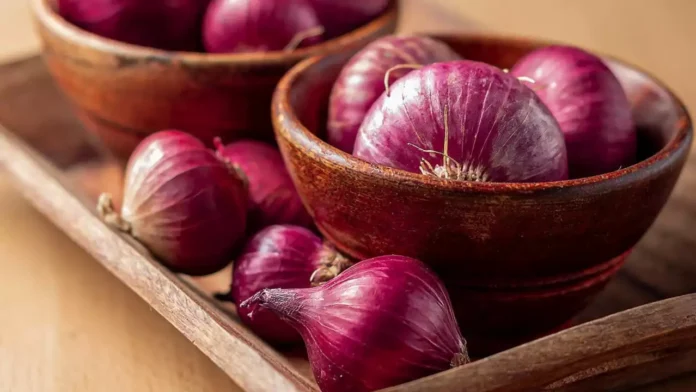On Saturday, the Government announced the lifting of the ban on onion exports, as per a notification from the Directorate General of Foreign Trade (DGFT), ending a restriction that had been in place for approximately six months.
“The export policy of onions has been modified from “prohibited to free,” subject to a minimum export price of $550 per metric tonne, with immediate effect and until further orders,” according to the DGFT notification.
This move is part of the government’s efforts to strike a balance, ensuring farmers receive fair prices while also maintaining inflation at manageable levels to safeguard consumers from its effects.
On April 27, the Government permitted the export of 99,150 metric tonnes of onions to six neighboring countries: Bangladesh, UAE, Bhutan, Bahrain, Mauritius, and Sri Lanka.
Continue Exploring: Govt extends ban on onion exports indefinitely
On December 8, 2023, the government imposed a restriction on onion exports effective March 31 of the same year. The restriction was imposed to ensure adequate local supply and price stability in light of reduced outputs expected for both the Kharif and Rabi harvests in 2023-24 compared to the previous year, as well as increased demand in the foreign market.
The National Cooperative Exports Limited (NCEL), tasked with exporting onions to these nations, procured domestic onions for export via an e-platform at L1 prices. These onions were then supplied to government-nominated agencies in the destination countries at negotiated rates, with payment made on a 100% advance basis, as outlined by the Food Ministry.
NCEL’s offer rate to buyers considers current prices in the destination market, as well as trends in international and domestic markets. Quotas assigned for export to the six countries are fulfilled based on requests from these destinations.
Being the leading onion producer in the nation, Maharashtra serves as the primary onion supplier for NCEL’s export operations.
The Government also authorized the export of 2000 metric tonnes (MT) of white onions, specifically cultivated for markets in the Middle East and certain European countries. Given its focus solely on exports, the production costs of white onions are higher compared to other varieties, attributable to increased seed expenses, adherence to good agricultural practices (GAP), and compliance with stringent maximum residue limit (MRL) regulations.
Continue Exploring: India eases onion export restrictions, allows shipments to selected countries
This year, the Department of Consumer Affairs’ Price Stabilisation Fund (PSF) has set a procurement target of 5 lakh tonnes for onion buffer beginning in Rabi 2024. NCCF and NAFED are working with local agencies such as FPOs/FPCs/PACs to help with purchase, storage, and farmer registration for any store-worthy onions. On April 11-13, 2024, a high-level team from the Department of Consumer Affairs, NCCF, and NAFED toured the Maharashtra districts of Nashik and Ahmednagar to promote awareness among farmers, FPOs/FPCs, and PACs about the procurement of 5 LMT of onion for the PSF buffer.
To mitigate onion storage losses, the Department of Consumer Affairs has opted to increase the amount of onions to be irradiated and cold-stored from 1200 MT last year to over 5000 MT this year, with technical assistance from BARC, Mumbai. The previous year’s pilot project on onion irradiation and cold storage has demonstrated a reduction in storage losses to less than 10 percent.


